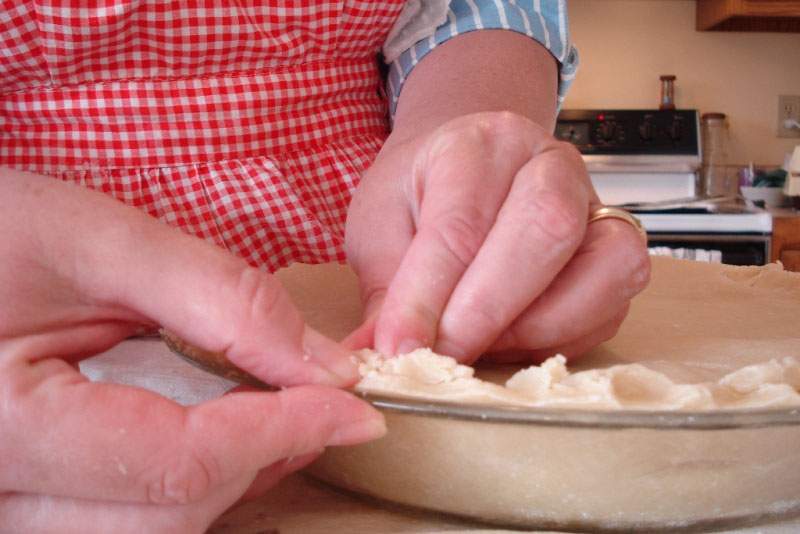
There may be nothing more American than apple pie. So what‘s the science behind this classic?
Let‘s start with the crust, usually made of flour, butter, and water. The flour and water come together and activate gluten, a combination of two proteins that structures the dough.
Meanwhile, butter--which is simply drops of water mixed into fat--produces flakiness as the evaporating water creates tiny air bubbles that are trapped in the crust.
The Maillard Reaction
As your dough bakes, amino acids in the proteins, and sugar molecules (found in lactose), combine in what‘s known as the Maillard reaction, giving crust its distinctive browned color and flavor.
Next up: filling. Water in your apple slices evaporates as your pie bakes. In fact, apples lose up to a third of their weight this way!
This causes them to shrink and pull away from the crust. To avoid the resulting air pockets, make sure you cut your apples in flat slices instead of the usual wedge, and layer them in flat-side down. And, unless you want your top crust to balloon outward from all that steam, be sure to add some vents in the dough.
Filling
You also don‘t want your filling to be too runny--a risk that comes from the water in your apples not evaporating enough, as some water will always leak into the filling. To avoid a soggy pie, add some flour or cornstarch: these molecules move more slowly than water molecules, creating that oozing (not runny) texture.
But even the molecules from flour or cornstarch move quickly at high temperature, so don‘t serve your pie fresh from the oven. Let it cool--it‘ll be worth the wait.
Thank you to Amy Rowat of UCLA for reviewing this episode's script.
Sources And Further Reading:
- Eplett, Layla. "How Alcohol Makes A Flakier Pie Crust: The ‘Proof‘ Is In The Pie." Scientific American, 14 March 2014. Accessed 22 April 2018.
- Eplett, Layla. "Learning Science Can Be as Easy as Pie." Scientific American, 14 March 2016. Accessed 22 April 2018.
- "Science Builds a Better Pie." New York Times, 2013. Accessed April 22, 2018.









